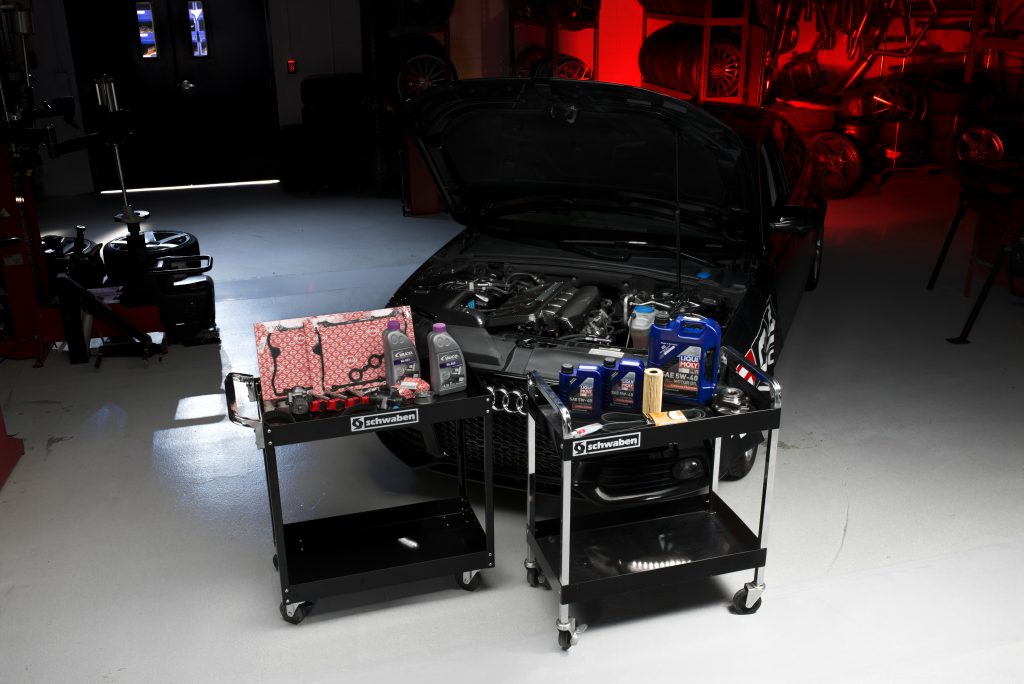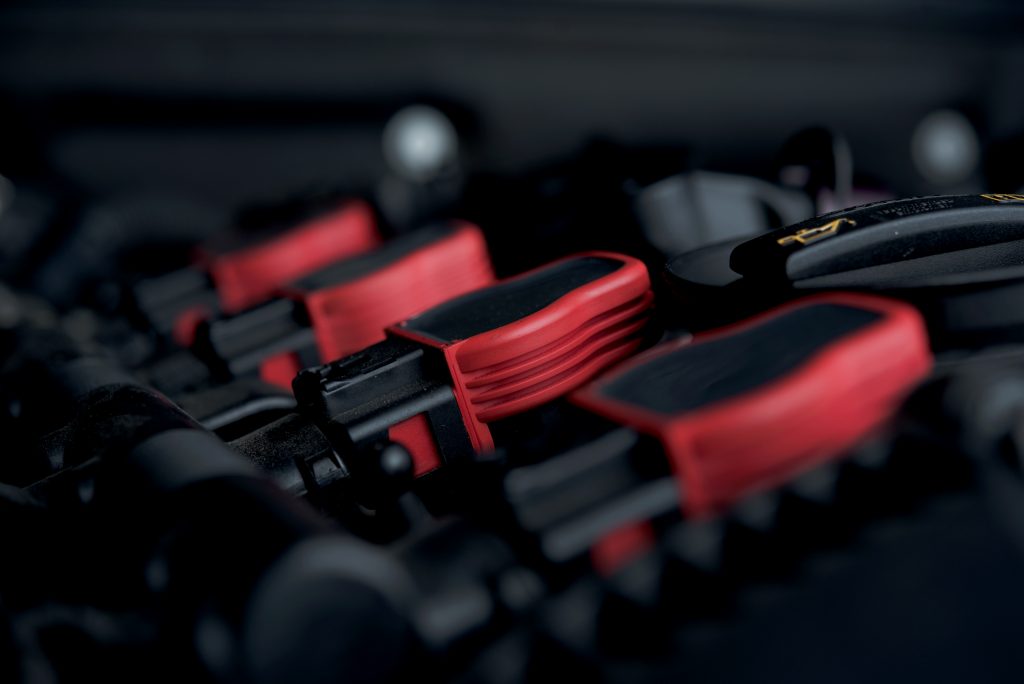Recently, we spoke about how to add over 100 hp to your Audi B7 A4. Today, we’re going to ensure it stands the test of time and holds up under all that pressure. While it is a fantastic platform, the 2.0T longitudinal engine in the B7 A4 has some shortcomings. Fortunately, those drawbacks are well-documented and easily remedied with our help. This is what you need to know to make your B7 A4 reliable and what you can expect to perform should you go out and pick one up for yourself in the near future.

Tumble Flap Failure
The tumble flap in the intake manifold for the 2.0T is highly prone to failure. The only way to deal with this is to replace the tumble flap motor in the intake manifold. We also provide an intake manifold runner flap delete kit from several quality manufacturers that will eliminate the problem once and for all. You will know if your flap is failing by encountering runner control faults, bank 1 stuck open fault, implausible signal faults, or regulation deviation faults. We suggest using a Schwaben Professional Scan Tool to read any codes you may have, as it will help you diagnose your issue.
Diverter Valve Failure
The Diverter Valve is responsible for recirculating pressurized air from the turbocharger when you lift off the throttle. Without it, the throttle valve would be closed and that pressure would build up with nowhere to go. When the Diverter Valve diaphragm fails, it causes a boost leak, which means you’re losing power under boost. To fix this, it’s as simple as replacing the DV with either an OEM unit or an aftermarket upgrade. You can also inspect your DV by removing it from the turbocharger and checking the diaphragm for cracks/holes. That is what would be considered a DV failure and cause boost leaks.
PCV Failure

The Positive Crankcase Vent Valve or PCV system allows excess pressure from the crankcase to vent back into the intake system where it joins intake air and is burned off by the combustion cycle. While this poses a different problem in itself, the main concern is when the PCV system fails, that positive pressure can be diverted back into the crankcase, which is less than ideal. Replacing the PCV valve cover, hose, and gaskets are the only way to go. You will notice blue smoke under wide-open throttle if the PCV fails, so that should give you an idea. That, and boost pressure drop, as well as MPG loss.
Broken Intake Ducting
The plastic intake ducting that channels air to the intake is brittle and close to the radiator fan. It can break and become shredded by the fan, which you definitely don’t want. If your fan is damaged as a result, you will need to replace your radiator fan as well as the intake ducting. However, the easiest solution that also serves as an upgrade is to replace your stock intake with a cold air intake, like our Luft-Technik Induction System that will be more durable, attractive, and add a touch more horsepower.
Cam Lobe Wear

Unfortunately, this is a big one. The cam lobes, which are responsible for raising the rocker arms and actuating intake/exhaust valves, are prone to wear. If they ‘round out,’ you risk not having enough lift or duration for the valves to open, making your intake or exhaust from that cylinder restricted. This robs performance and can be incredibly detrimental to the life of your engine. The only solution is to either replace the camshafts with OEM units or replace it with an improved intake camshaft. However, the next common issue listed below also includes a solution: increase the surface hardening of the camshaft lobe for the high-pressure fuel pump upgrade.
High-Pressure Fuel Pump Failure
The factory HPFP is not up to it’s task, especially in modified engines, and is prone to failure. You can experience several engine codes that will tip you off to this fault. Replacing the HPFP is fine, but upgrading to an improved unit is better. It is a good idea to upgrade the HPFP and the intake camshaft at the same time for the most reliable solution. You should also replace the Cam Follower periodically as well.
Misfires/Rough Cold Start

This is a common issue for VWs and Audis of this era. The spark plugs can become fouled and coil packs tend to fail, which can cause random or consistent misfires as well as rough idle. While it could be a bad fuel injector or failing HPFP, if you have already handled the HPFP upgrade, it is most often your spark plugs and coil packs. If you have one bad coil/plug, you will have others to follow it. Just replace all the plugs and coils at once with the upgraded units we provide in our ignition service kit and never worry about it again.
Air Conditioner Compressor Failure
If you are like me and have fun with beater cars, then a broken A/C system is usually something you just live with. However, if this is your primary vehicle or one you want to keep in perfect condition, driving without A/C is a definite drag. The primary cause is usually leaks when A/C systems fail, but in the case of the B7 A4, it is more likely to be the compressor itself. You can identify if you have the Zelex or Valeo compressor by the pulley. Both of these manufacturers are known to have failures in their units. Replacing with the same unit is easy for parts buying, but upgrading to a unit with more longevity is a better option. However, you will still need to have the system recharged. In my experience, buy the compressor and replace it yourself, along with the accessory belts, then take it to the dealership. It’s usually less than 200 bucks to have them pressure test the system, replace any leaking o-rings, and fill the system so you have ice cold A/C once again.

Of course, media blasting to clean the carbon that notoriously builds up due to the direct fuel injection method used in this engine is a must, as is regular service with VW/Audi approved oil and filters. We have everything you need in helpful kits, like our oil service kit and walnut blasting kit, so you don’t need to worry about hunting for all the A4 parts to keep your Audi B7 running and driving for a long and healthy life.






